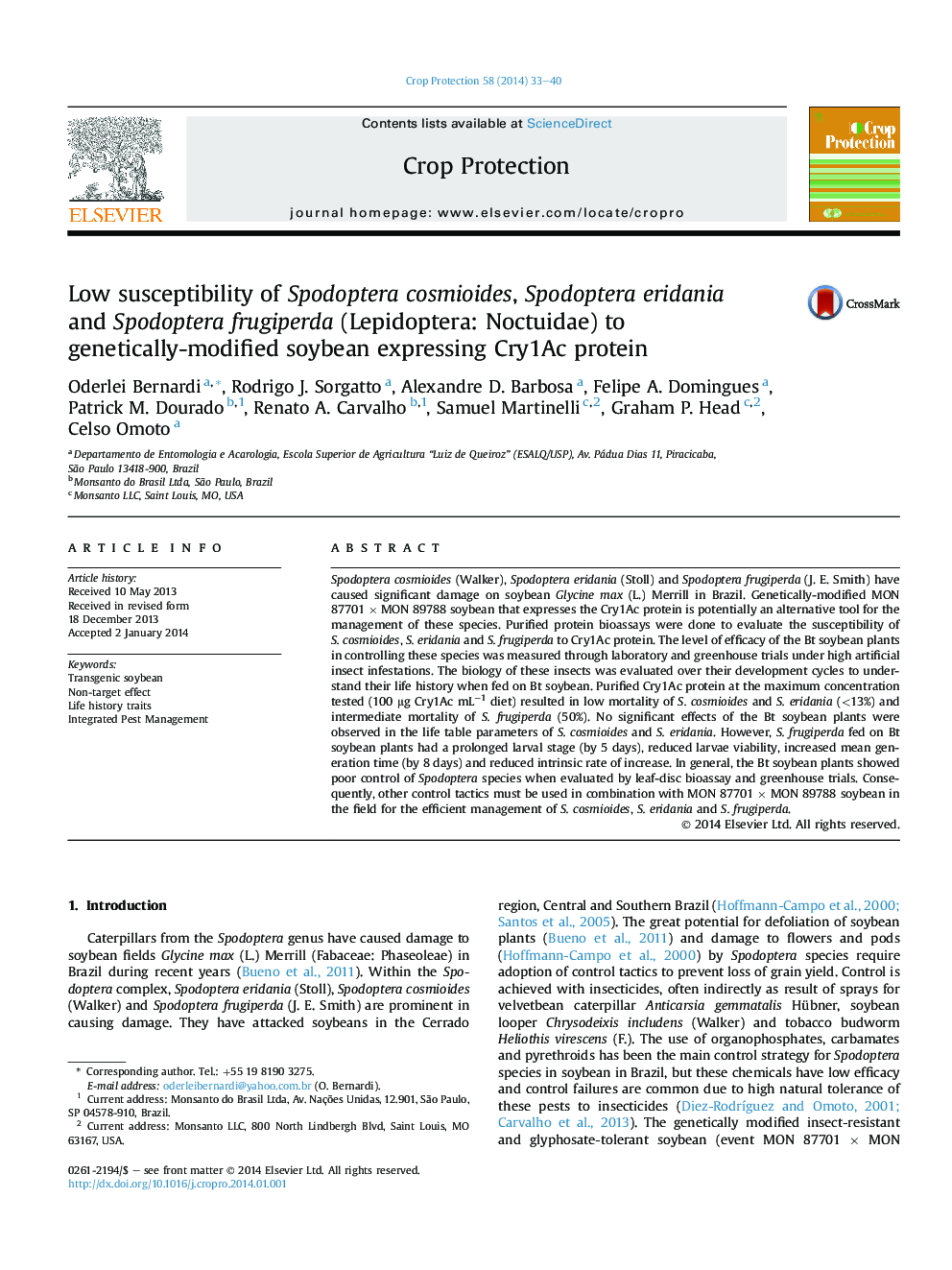| کد مقاله | کد نشریه | سال انتشار | مقاله انگلیسی | نسخه تمام متن |
|---|---|---|---|---|
| 4506051 | 1624329 | 2014 | 8 صفحه PDF | دانلود رایگان |

• MON 87701 × MON 89788 soybean is effective against certain lepidopteran pests.
• We evaluated the efficacy of MON 87701 × MON 89788 soybean against Spodoptera species.
• MON 87701 × MON 89788 soybean plants showed poor control of Spodoptera species.
• Other control tactics will be necessary for Spodoptera species in Bt soybean areas.
Spodoptera cosmioides (Walker), Spodoptera eridania (Stoll) and Spodoptera frugiperda (J. E. Smith) have caused significant damage on soybean Glycine max (L.) Merrill in Brazil. Genetically-modified MON 87701 × MON 89788 soybean that expresses the Cry1Ac protein is potentially an alternative tool for the management of these species. Purified protein bioassays were done to evaluate the susceptibility of S. cosmioides, S. eridania and S. frugiperda to Cry1Ac protein. The level of efficacy of the Bt soybean plants in controlling these species was measured through laboratory and greenhouse trials under high artificial insect infestations. The biology of these insects was evaluated over their development cycles to understand their life history when fed on Bt soybean. Purified Cry1Ac protein at the maximum concentration tested (100 μg Cry1Ac mL−1 diet) resulted in low mortality of S. cosmioides and S. eridania (<13%) and intermediate mortality of S. frugiperda (50%). No significant effects of the Bt soybean plants were observed in the life table parameters of S. cosmioides and S. eridania. However, S. frugiperda fed on Bt soybean plants had a prolonged larval stage (by 5 days), reduced larvae viability, increased mean generation time (by 8 days) and reduced intrinsic rate of increase. In general, the Bt soybean plants showed poor control of Spodoptera species when evaluated by leaf-disc bioassay and greenhouse trials. Consequently, other control tactics must be used in combination with MON 87701 × MON 89788 soybean in the field for the efficient management of S. cosmioides, S. eridania and S. frugiperda.
Journal: Crop Protection - Volume 58, April 2014, Pages 33–40